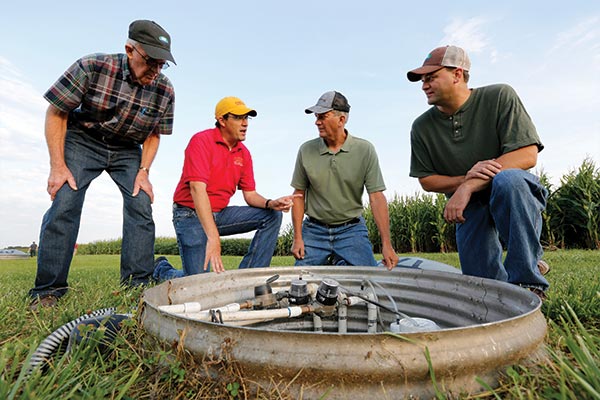
Matt Helmers’ mission is to put the “middle ground” in managing agricultural land. Crops need enough but not too much water in the soil. Agricultural producers seek to get just the right amount of nutrients to plants, without the excess traveling elsewhere.
“The overall goal of my research in water quality and drainage flow is to look for ways to maintain agricultural productivity while reducing our environmental footprint,” says Helmers, who is a professor of agricultural and biosystems engineering. “Better understanding of how water drains from fields will help us design balanced agricultural practices for the future.”
Helmers collects subsurface data on both the volume of water that drains from cropland and the nutrient content found in water samples. The team combines current information with more than 25 years of historical drainage data to help form a clearer picture of the amount of water needed for best crop production, how much and when extra water is available for capture and irrigation reuse, and amounts of nutrient movement.
“No other state has the wealth of data that we do on drainage and water quality,” says Helmers. “That positions Iowa State University well to answer current questions and make predictions about agricultural water needs under the changing rainfall patterns we expect to see in the future.”